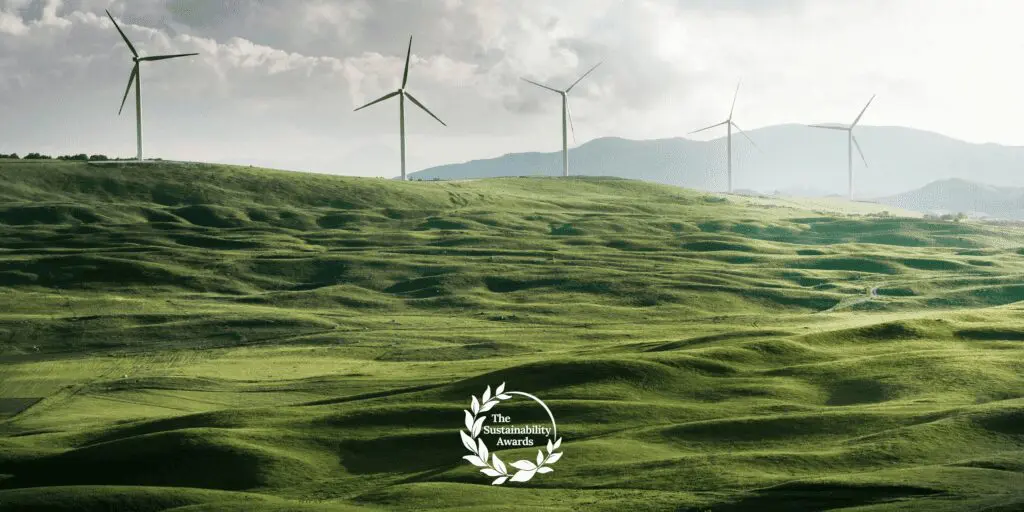Have you ever wondered if those “eco-friendly” products you’re buying are truly as green as they claim? Enter greenwashing, a deceptive marketing tactic that can leave you feeling duped. Greenwashing is when companies make misleading or false claims about their environmental practices or products. They do this to appear more environmentally responsible than they actually are.

Spotting greenwashing can be tricky, but it’s crucial for making informed choices as a consumer. Companies might use vague terms like “all-natural” or display green imagery to create an eco-friendly illusion without substantive evidence. They may also exaggerate small environmental efforts while downplaying their overall negative impact on the planet.
Understanding greenwashing empowers you to make genuinely sustainable choices. By learning to recognise greenwashing tactics, you can avoid falling for false claims. And instead, support truly environmentally responsible businesses. This knowledge helps you become a more discerning consumer and contribute to meaningful environmental progress.
Understanding Greenwashing
Greenwashing is a deceptive marketing tactic that can mislead consumers about a company’s environmental practices. It’s crucial to recognise greenwashing to make informed choices and support genuinely sustainable businesses.
Definition and Origin of Greenwashing
Greenwashing refers to the practice of making misleading environmental claims to appear more eco-friendly than a company actually is. The term started in the 1980s. Environmentalist Jay Westerveld saw hotels asking guests to reuse towels to help the environment. However, these hotels did not adopt other eco-friendly practices.
Companies engage in greenwashing to capitalise on growing consumer demand for sustainable products. This ‘green sheen’ can take various forms, from exaggerated claims to outright falsehoods about a product’s environmental impact.
Greenwashing can be subtle. This makes it a challenge to distinguish between marketing ploys and genuine eco-friendly efforts.
Methods and Techniques of Greenwashing
Companies use various techniques to greenwash their products or services:
- Vague claims: Using terms like ‘eco-friendly’ or ‘natural’ without specific evidence.
- Hidden trade-offs: Highlighting one green attribute while ignoring other harmful aspects.
- Irrelevant claims: Emphasising a truthful but unimportant environmental benefit.
- False certification: Using fake labels or unverified environmental certifications.
Greenwashing often involves visual marketing tactics such as using green colours or nature imagery to create an eco-friendly impression. Some companies may also exaggerate their environmental initiatives or make claims that are technically true but misleading in context.
Greenwashing in the Fashion Industry
The fashion industry often uses greenwashing. This happens because it has a big environmental impact and consumers want sustainable clothing. Common greenwashing tactics in fashion include:
- Using buzzwords like ‘sustainable’ or ‘eco-conscious’ without clear definitions.
- Launching small ‘green’ collections while maintaining unsustainable practices overall.
- Emphasising recycled materials without addressing other environmental concerns.
To avoid falling for greenwashing in fashion, look for specific, verifiable claims about a brand’s practices. Check for certifications from reputable organisations and research the company’s overall sustainability efforts.
Be wary of fast fashion brands suddenly claiming to be eco-friendly without substantial changes to their business model. True sustainability in fashion often involves slower production, higher-quality materials, and transparent supply chains.
Environmental Claims and Misleading Labels
Companies often use environmental claims and labels to attract eco-conscious consumers. However, these claims can sometimes be misleading or lack substance. It’s crucial to scrutinise product packaging and marketing materials carefully.
Vague Claims and Lack of Clarity
Vague and unclear terms like ‘eco’ or ‘sustainable’ are frequently used without proper explanation or evidence. You might encounter phrases such as ‘environmentally friendly’ or ‘green’ that sound positive but don’t provide specific information about a product’s environmental impact.
To spot these vague claims, look for concrete details. For example, a truly eco-friendly product should explain how it reduces waste, conserves energy, or uses sustainable materials. If you can’t find this information, be wary of the claim.
Some companies use green imagery or nature-themed packaging to create an illusion of sustainability. Don’t be fooled by leaves, trees, or earthy colours alone. Always seek out factual information about the product’s environmental credentials.
Misuse of Terms like Organic and Biodegradable
Terms like ‘organic’ and ‘biodegradable’ have specific meanings, but they’re often misused in marketing. Organic products should be certified by recognised bodies. In the UK, look for labels from the Soil Association or other EU-recognised certifiers.
‘Biodegradable’ is another term to watch out for. While it sounds positive, not all biodegradable items break down quickly or safely. Some may release harmful chemicals as they decompose. Look for specific information about how long the product takes to break down and under what conditions.
Be cautious of products claiming to be ‘100% natural’. This term isn’t regulated and doesn’t necessarily mean environmentally friendly. Many natural substances can be harmful to the environment.
Impacts of Greenwashing

Greenwashing has far-reaching consequences that affect both consumers and the environment. It erodes trust, hinders genuine sustainability efforts, and can lead to unintended environmental harm.
On Consumer Trust and Protection
Greenwashing undermines consumer confidence in eco-friendly products and initiatives. When you encounter misleading environmental claims, you may become sceptical of all green marketing.
This scepticism can make it difficult for you to identify truly sustainable options. You might end up inadvertently supporting harmful practices or avoiding genuinely eco-friendly choices.
Companies engaging in greenwashing often charge premium prices for supposedly ‘green’ products. This means you could be paying more for items that aren’t actually better for the environment.
Consumer protection agencies are increasingly scrutinising green claims. In Europe, 42% of green claims were found to be exaggerated, false, or deceptive. This highlights the scale of the problem and the need for stronger regulations to protect your interests.
On the Environment and Climate Change
Greenwashing can have serious negative impacts on the environment. When companies make false claims about their environmental practices, it can lead to:
- Increased pollution
- Depletion of natural resources
- Continued harm to ecosystems
Greenwashing can hinder genuine efforts to combat climate change. Companies may focus on creating a green image rather than implementing meaningful sustainability measures. This diverts resources and attention from real solutions.
The practice can also slow down the adoption of truly eco-friendly technologies and practices. When consumers are misled by false claims, they may not seek out genuinely sustainable alternatives.
Greenwashing creates a false sense of progress. This can delay important policy changes and regulations that protect the environment and tackle climate change.
Legal and Regulatory Framework
Governments and regulatory bodies have established guidelines to combat greenwashing and protect consumers from misleading environmental claims. These frameworks aim to ensure transparency and accuracy in sustainability marketing.
Federal Trade Commission and Green Guides
The Federal Trade Commission (FTC) in the United States issued Green Guides to help businesses avoid deceptive environmental marketing claims. These guides outline principles for making clear, substantiated green claims.
Key points include:
- Claims must be specific and qualified
- Broad, vague terms like “eco-friendly” should be avoided
- Environmental benefits must be substantiated with scientific evidence
- Comparative claims need a clear basis for comparison
The Green Guides cover various environmental claims, including carbon offsets, renewable energy, and recycled content. While not legally binding, the FTC can take action against companies that violate these guidelines under consumer protection laws.
Advertising Standards Authority and Green Claims Code
In the UK, the Advertising Standards Authority (ASA) enforces the Green Claims Code to prevent greenwashing in advertising. This code sets standards for environmental claims in marketing communications.
Key principles include:
- Claims must be truthful and accurate
- Claims must be clear and unambiguous
- Claims must not omit or hide important information
- Comparisons must be fair and meaningful
The ASA investigates complaints about misleading green claims and can require advertisers to withdraw or amend non-compliant ads. The Green Claims Code applies to all forms of advertising, including social media and websites.
Companies must ensure their sustainability claims comply with these regulations to avoid legal risks and maintain consumer trust.
Corporate Responsibility and Sustainability
Corporate responsibility and sustainability are vital components of modern business practices. They encompass ethical and environmentally conscious approaches that companies adopt to create positive impacts on society and the planet.
Corporate Social Responsibility
Corporate Social Responsibility (CSR) refers to a company’s commitment to operating ethically and contributing to economic development whilst improving the quality of life of its workforce and the local community. CSR initiatives often include:
- Charitable donations and community involvement
- Ethical labour practices and fair wages
- Reducing environmental impact
- Promoting diversity and inclusion
CSR has become a pivotal area of focus for many companies, integrating it into their operational strategies. When implemented genuinely, CSR can enhance a company’s reputation, attract customers, and boost employee morale.
However, it’s crucial to note that some businesses may use CSR disclosures to create positive impressions without substantive action, which can lead to accusations of greenwashing.
Sustainable Practices in Business
Sustainable business practices aim to meet present needs without compromising future generations’ ability to meet their own needs. These practices often focus on:
- Reducing carbon footprint and energy consumption
- Implementing circular economy principles
- Sustainable supply chain management
- Developing eco-friendly products and services
Businesses are increasingly prioritising sustainability due to growing consumer awareness and regulatory pressures. Adopting sustainable practices can lead to cost savings, innovation, and improved brand value.
It’s essential for companies to set clear, measurable sustainability goals and regularly report on their progress to avoid accusations of greenwashing.
Transparency and Third-Party Certification
Transparency in corporate responsibility and sustainability efforts is crucial for building trust with stakeholders. Companies can demonstrate their commitment through:
- Regular sustainability reports
- Open communication about challenges and progress
- Engagement with stakeholders and addressing their concerns
Third-party certification plays a vital role in verifying sustainability claims. Certifications such as B Corp, Fair Trade, and ISO 14001 provide independent verification of a company’s environmental and social performance.
Public interest in sustainability and ESG (Environmental, Social, and Governance) factors can significantly impact a brand’s reputation. To mitigate greenwashing risks, companies should ensure their sustainability claims are accurate, clear, and backed by credible evidence.
Carbon Footprint and Offsetting
Carbon footprints and offsetting are key concepts in the climate change discussion. They play a crucial role in how companies and individuals approach their environmental impact. Let’s examine the claims and realities surrounding these practices.
Net Zero and Carbon Neutral Claims
Many organisations tout their ‘net zero’ or ‘carbon neutral’ status as proof of environmental responsibility. These terms refer to balancing carbon emissions with removal or reduction efforts. However, such claims can be misleading.
Carbon neutral typically means offsetting emissions through activities like reforestation or investing in renewable energy. Net zero aims for a more comprehensive approach, focusing on reducing emissions first.
Be wary of companies that rely heavily on offsetting without reducing their actual emissions. True environmental progress requires prioritising emission reduction over offsetting alone.
The Role of Carbon Offsets and Sinks
Carbon offsets are activities that compensate for emissions elsewhere. Carbon sinks, like forests, absorb more carbon than they release. Both play a part in climate strategies, but their effectiveness is debated.
Offsetting projects often don’t deliver the promised carbon reductions. They can distract from the urgent need to cut emissions at the source. Critics argue that offsets allow polluters to continue harmful practices while shifting responsibility.
Carbon sinks are crucial for removing CO2 from the atmosphere. However, relying on them without reducing emissions is insufficient to address climate change. A balanced approach is necessary, prioritising emission cuts alongside responsible offsetting and sink preservation.
The Role of Technology and Innovation
Technology plays a crucial role in combating greenwashing and promoting genuine sustainability efforts. Advancements in eco-friendly products and renewable energy technologies are driving positive change in environmental practices.
Advancements in Eco-Friendly Products
Innovative technologies are revolutionising the development of eco-friendly products. You’ll find new tools enhancing product traceability, allowing you to verify sustainability claims more easily.
Blockchain technology, for instance, offers increased transparency in supply chains. This enables you to trace products from source to shelf, ensuring eco-friendly sourcing claims are legitimate.
Smart packaging solutions now provide real-time information on a product’s environmental impact. QR codes and NFC tags allow you to access detailed sustainability data instantly.
Biodegradable materials research has led to breakthroughs in packaging alternatives. You’ll see more products using plant-based plastics and compostable materials, reducing environmental harm.
Renewable Energy and its Impact on Sustainability
Renewable energy technology innovation (RETI) is reshaping sustainability practices across industries. RETI drives genuine environmental efforts, moving beyond mere greenwashing claims.
Solar panel efficiency has improved dramatically, making clean energy more accessible. You can now power your home or business with increasingly affordable and effective solar solutions.
Wind turbine technology advancements have led to larger, more efficient designs. Offshore wind farms are becoming more viable, expanding clean energy production capabilities.
Energy storage innovations, such as improved battery technologies, address intermittency issues. You can now rely on renewable sources for consistent power supply, even when the sun isn’t shining or the wind isn’t blowing.
Smart grid systems optimise energy distribution, reducing waste. These technologies enable you to monitor and manage your energy consumption more effectively.
Consumer Role and Education
Consumers play a crucial part in combating greenwashing. Your awareness and actions can drive positive change in the market, encouraging companies to adopt genuine sustainability practices.
Spotting Greenwashing Tactics
To identify greenwashing, look for vague or misleading claims on product packaging. Be wary of terms like ‘eco-friendly’ or ‘natural’ without supporting evidence. Check for third-party certifications that verify environmental claims.
Research companies’ sustainability practices beyond their marketing materials. Look for concrete data on their websites about emissions reductions, waste management, and ethical sourcing.
Be cautious of products that emphasise one green attribute while ignoring other environmental impacts. For example, a ‘recyclable’ plastic bottle might still contribute to pollution if not properly disposed of.
Supporting Genuine Sustainable Brands
Seek out brands with transparent supply chains and clear sustainability goals. Look for detailed information about their environmental initiatives on their websites or annual reports.
Support companies that provide sustainability information without overwhelming you. They should clearly explain their eco-friendly practices and the impact of their products.
Consider shopping from certified B Corporations, which meet high standards of social and environmental performance. These companies are legally required to consider the impact of their decisions on workers, customers, suppliers, community, and the environment.
Your purchasing decisions send a powerful message to businesses. By choosing genuinely sustainable products, you encourage more companies to adopt authentic green practices.
The Future of Green Marketing
Green marketing is evolving rapidly as consumers become more environmentally conscious. Companies face new challenges and opportunities in building authentic brand reputations based on genuine sustainability efforts.
Challenges and Opportunities
As you navigate the future of green marketing, you’ll encounter both obstacles and prospects. Greenwashing remains a significant hurdle, with some firms making false environmental claims. To stand out, you’ll need to provide transparent, verifiable information about your eco-friendly practices.
Digital platforms offer new ways to showcase your green initiatives. You can use social media to share behind-the-scenes glimpses of your sustainable processes. Interactive websites allow customers to track your environmental impact in real-time.
Emerging technologies like blockchain could revolutionise supply chain transparency. This would enable you to prove the authenticity of your green claims, building trust with sceptical consumers.
Building Brand Reputation on Authentic Environmental Efforts
To establish a credible green brand, you must prioritise genuine environmental actions. Start by conducting a thorough audit of your company’s environmental impact. Identify areas for improvement and set measurable goals.
Collaborate with environmental experts and NGOs to develop robust sustainability strategies. These partnerships lend credibility to your efforts and provide valuable expertise.
Engage your employees in your green initiatives. When staff are passionate about protecting the planet, it shines through in customer interactions.
Consider obtaining recognised environmental certifications. These third-party verifications can bolster your green credentials and differentiate you from competitors who may be engaging in greenwashing.
Remember, authenticity is key. Be honest about your challenges and progress. Consumers appreciate transparency and are more likely to support brands that demonstrate a genuine commitment to sustainability.
Frequently Asked Questions
Greenwashing tactics can be subtle and pervasive across industries. Consumers need to be vigilant and informed to identify misleading environmental claims. Companies employ various strategies to create a false impression of sustainability.
How can consumers identify greenwashing tactics in business?
Look for specific, verifiable environmental claims. Be wary of vague terms like ‘eco-friendly’ or ‘natural’ without supporting evidence. Check for third-party certifications from reputable organisations.
Research a company’s overall practices, not just their marketed ‘green’ products. Compare claims against industry standards and scientific consensus on environmental issues.
Can you provide illustrations of greenwashing in the fashion industry?
Fast fashion brands often label collections as ‘sustainable’ whilst maintaining harmful production practices. Some companies use recycled materials in a small percentage of products but market their entire range as eco-friendly.
Brands may highlight one environmentally friendly aspect, such as organic cotton, whilst ignoring other harmful practices like water pollution or unfair labour conditions.
Which enterprises have been accused of greenwashing practices?
Major oil companies have faced criticism for advertising ‘clean energy’ initiatives whilst continuing to invest heavily in fossil fuels. Some car manufacturers have been accused of manipulating emissions tests to appear more environmentally friendly.
Large consumer goods corporations have been called out for promoting recyclable packaging whilst contributing significantly to plastic pollution.
How does greenwashing affect sustainability efforts?
Greenwashing can mislead consumers, diverting their support from genuinely sustainable options. It can create cynicism and distrust, making people less likely to engage with environmental initiatives.
By creating a false sense of progress, greenwashing can slow down real efforts to address environmental issues and reduce the urgency for meaningful change.
In what ways is greenwashing a concern in environmental, social, and governance (ESG) criteria?
Companies may exaggerate their ESG performance to attract investors and improve their reputation. This can lead to misallocation of funds meant for truly sustainable investments.
Greenwashing in ESG reporting can undermine the credibility of sustainability metrics and make it harder for investors to make informed decisions.
What are the common strategies used by companies to mislead consumers about their environmental practices?
Companies often use vague language and unclear claims about their products’ environmental benefits. They may highlight a single ‘green’ attribute whilst ignoring other harmful aspects of their business.
Some firms create misleading imagery, using nature themes or green colours to imply eco-friendliness. Others may set easy environmental targets or focus on issues unrelated to their main environmental impact.



